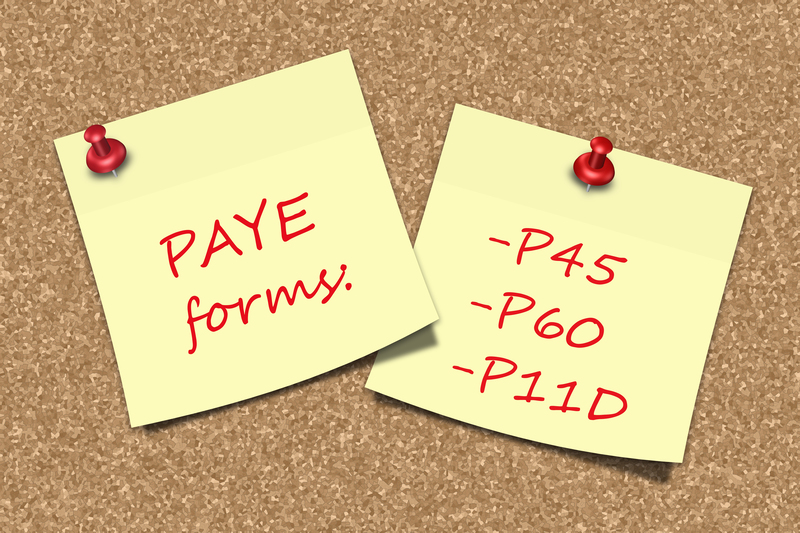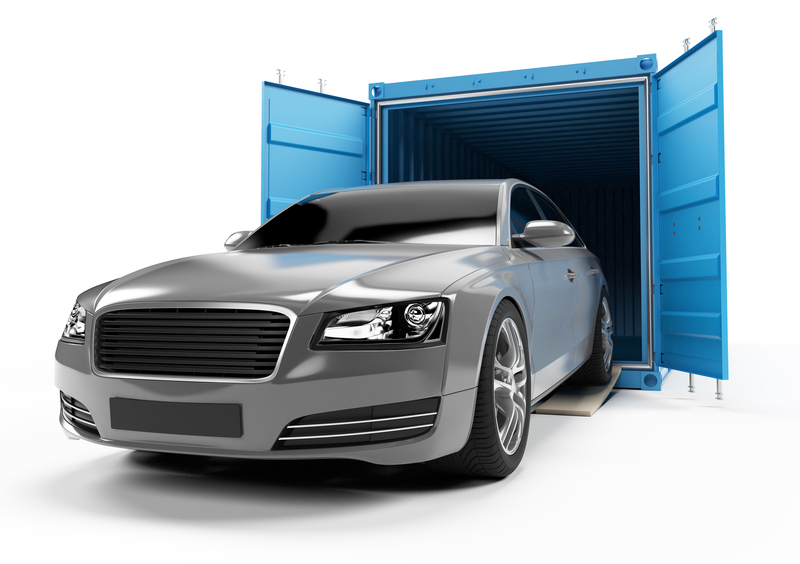Piano Moving Mishaps: How Pros Prevent Common Mistakes
Posted on 25/05/2025
Piano Moving Mishaps: How Pros Prevent Common Mistakes
Moving a piano is no ordinary task. Whether you have an upright, baby grand, or concert grand, each presents a unique set of challenges that can stump even diligent DIYers. The risks? Costly damage to the instrument, your property, or even injury. This is why understanding piano moving mishaps and the expert methods pros use to dodge common errors is so important.
In this comprehensive guide, we'll unpack the complexities of piano relocation, explore the most frequent mistakes amateurs make, and shed light on proven techniques that professional piano movers employ to keep your cherished instrument--and everyone involved--safe and sound.

Why Pianos Are So Difficult to Move
Pianos aren't just heavy--they are amazingly fragile and complex. Consider these factors:
- Size and Shape: Pianos are large and awkwardly shaped, making them hard to maneuver through tight spaces.
- Weight: Even small upright pianos can weigh over 400 pounds, and grand pianos may exceed 1,200 pounds.
- Delicate Components: Inside, there are thousands of precision parts--strings, hammers, pedals--that are easily dislodged or broken.
- Center of Gravity: Pianos are often top- or side-heavy, increasing their risk of tipping.
The stakes are high: Damaging a piano during a move can mean expensive repairs--or permanent loss of rich sound quality.
Common Piano Moving Mishaps: What Can Go Wrong?
Despite best intentions, many people underestimate the difficulty of moving a piano. Here are some of the most common mistakes:
- Insufficient Planning: Failing to measure doorways and stairwells or neglecting to chart the best route can spell disaster.
- Improper Equipment: Attempting a move without the right dollies, straps, and padding often leads to scratched surfaces or worse--injury.
- Lack of Manpower: Trying to move a large, awkward piano with too few helpers dramatically increases risk.
- Poor Lifting Technique: Lifting pianos from the wrong places or postures can injure backs and ruin the piano's legs and lyre.
- Neglecting Protection: Skipping padding means exposing the finish, keys, or pedals to dents and dings.
- Improper Placement in Van: Not securing the piano correctly can turn a moving van into a disaster zone at the first bump or sharp turn.
Each of these errors is easily avoidable if you know the right steps. This is where professional movers' experience shines.
How Professional Piano Movers Prevent Mishaps
Seasoned piano movers have a reputation for a reason. They have the expertise, tools, and teamwork needed to sidestep the most common moving hazards. Let's break down their approach.
Detailed Pre-Move Planning
Pros never rush into a move blindly. The planning phase is as important as the move itself. Here's how the experts prep:
- Site Inspection: Conduct a walk-through of both the current and new locations, taking measurements of hallways, doors, stairs, and elevators.
- Route Mapping: Identify and remove obstacles, arrange for elevator or stairwell reservations, and ensure clear passage for the piano.
- Weather Consideration: Plan moves to avoid rainy or icy days, which dramatically increase risk.
Use of Specialized Piano Moving Equipment
Ask any professional, and they'll tell you: Proper equipment makes all the difference. Here's what they use:
- Piano Skid Boards: Specially designed boards that secure the piano and distribute weight for easier lifting.
- Furniture Dollies: Heavy-duty wheeled platforms that handle massive weight and roll smoothly over various surfaces.
- Moving Straps and Harnesses: Allow movers to stabilize and lift efficiently, reducing the risk of slips and strain injuries.
- Thick Blankets and Padding: Protect delicate surfaces from scratches and impacts.
- Protective Covers for Keys and Pedals: Prevent damage to the most vulnerable components.
Using this gear ensures both your piano and your property remain damage-free.
Proper Lifting and Handling Techniques
One of the most important differences between amateur and professional piano movers is lifting technique. The pros:
- Lift with Legs, Not Back: This avoids injuries that could sideline the entire moving process.
- Keep the Piano Upright: Tipping a piano can dislodge internal components and ruin the instrument's balance.
- Team Communication: Use coordinated commands for lifting, lowering, and pivoting, ensuring everyone moves in sync.
Protecting Floors, Walls, and Stairs
For professional movers, protecting your property is as crucial as protecting the piano itself:
- Floor Coverings: Lay down runners or sheets to prevent scuffs and scratches.
- Wall Guards: Padding or boards placed in critical spots along tight corridors and staircases absorb accidental bumps.
- Stair Tread Covers: Help maintain grip and prevent damage during multi-level moves.
Using the Right Vehicle and Securing the Piano Properly
The moving van itself is another place where mishaps often occur. Pros take the following steps:
- Use of Lift Gates or Ramps: Facilitates safe loading and unloading, especially for grand pianos.
- Piano Placement: Position the piano against stable surfaces in the truck, away from shifting cargo.
- Proper Strapping: Secure the piano with heavy-duty straps to lock it in place for transit--no sliding or tipping allowed.
Special Tips for Different Piano Types
Upright Piano Moving Tips
- Lock the Lid and Secure the Bench: Prevents keys from being damaged and keeps accessories from shifting.
- Do Not Move by the Legs: Piano legs are not meant to bear weight during movement--always lift from the body.
Grand and Baby Grand Piano Moving Tips
- Remove the Legs and Pedal Lyre: Essential for safe handling and preventing structural damage.
- Wrap and Label Small Parts: Store screws, bolts, and pedals in labeled bags to streamline reassembly.
- Move on Edge: Use a skid board and gently transport the piano on its side rather than flat.
The Cost of Common DIY Piano Moving Mishaps
Many homeowners attempt to save money by moving a piano themselves--not realizing the potential fallout:
- Cracked Cases and Dented Frames: Repairs can run thousands of dollars and may never fully restore the instrument's value.
- Broken Internal Mechanisms: Jarring impacts may snap strings or damage hammers, resulting in expensive repairs.
- Property Damage: Gouged floors, holed drywall, or damaged stair railings add unexpected costs.
- Personal Injury: Back injuries--or worse--often cost far more in lost wages and medical bills than hiring professional piano movers in the first place.
Why Hiring Professional Piano Movers Pays Off
While it might seem tempting to move your piano with a few strong friends, in most cases, the risks outweigh the rewards. Professional piano movers offer:
- Insurance and Liability Coverage: Your piano and property are protected in case of an accident.
- Experience with Unique Challenges: High-rise buildings, tight stairwells, and tricky corners are routine for pros.
- Time Efficiency: Pros work faster--and with less mess--than amateur efforts.
- Peace of Mind: Knowing your cherished instrument is in expert hands is invaluable.
Extra Pro Tips for a Smooth Piano Move
- Schedule Early: The best movers book up fast, particularly during peak moving seasons.
- Tune After the Move: Always have your piano professionally tuned after settling in--it may be knocked out of tune by even the most careful move.
- Climate Control: Store the piano in a climate-controlled area; rapid humidity and temperature changes can warp wood or stretch strings.
- Document Condition: Take photos before and after moving as a record, especially if you need to file an insurance claim.

Piano Moving Safety: The Professional Mindset
At the heart of every successful piano move is a respect for the instrument's value and a commitment to safety. Here's what pros keep top of mind:
- Never Rush: Taking time to plan each step is far safer than hurrying--and prevents costly errors.
- Keep the Team Informed: Constant communication reduces confusion during the trickiest maneuvers.
- Regular Equipment Checks: Well-maintained dollies, straps, and boards prevent sudden failures.
Final Thoughts: Trust the Experts
Attempting a piano move without the right equipment, knowledge, or manpower is a recipe for disaster. By hiring professional piano movers--experts trained specifically in navigating heavy, delicate instruments--you'll not only safeguard your precious piano, but also your home, your safety, and your peace of mind.
The key to avoiding the most frequent piano moving mistakes lies in expertise, planning, and specialized equipment. Whether you're relocating across the room or across the country, allow the pros to handle the heavy lifting, so your piano can provide beautiful music for years to come.
Ready for a Move?
Don't put your piano in harm's way--contact a professional piano moving service today to ensure a safe, smooth, and stress-free transition!

